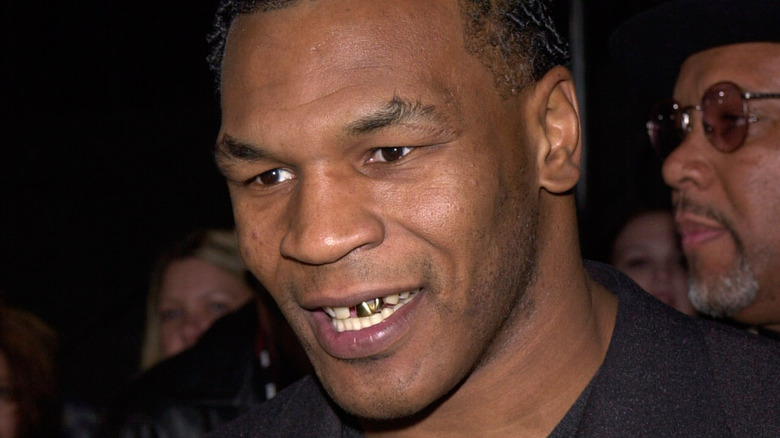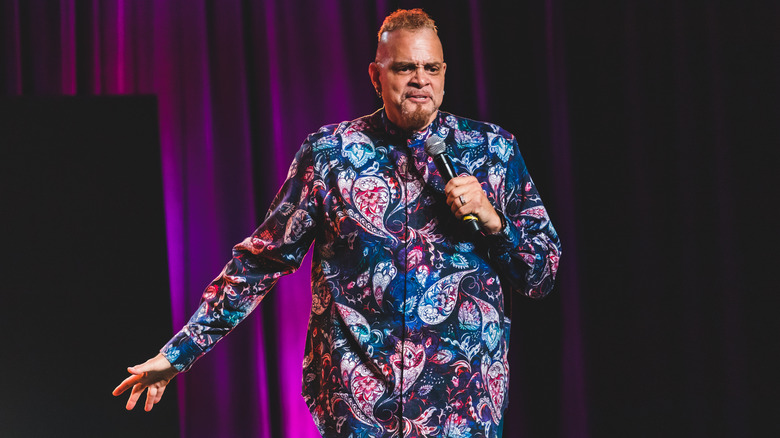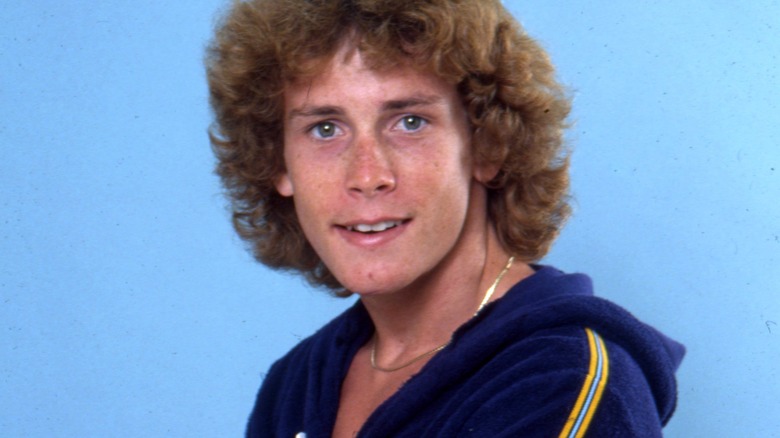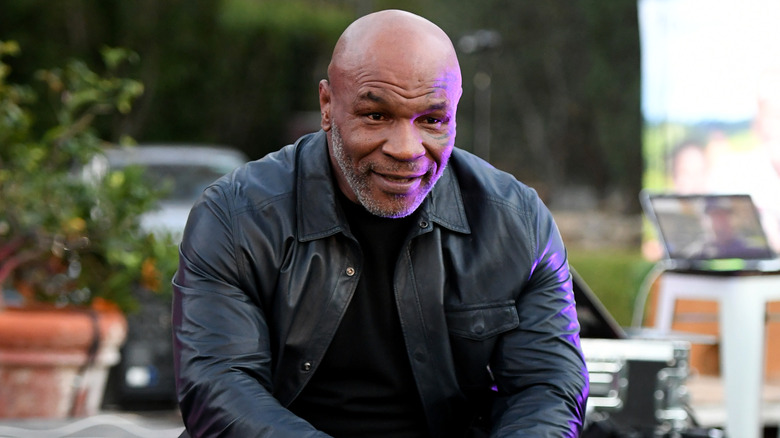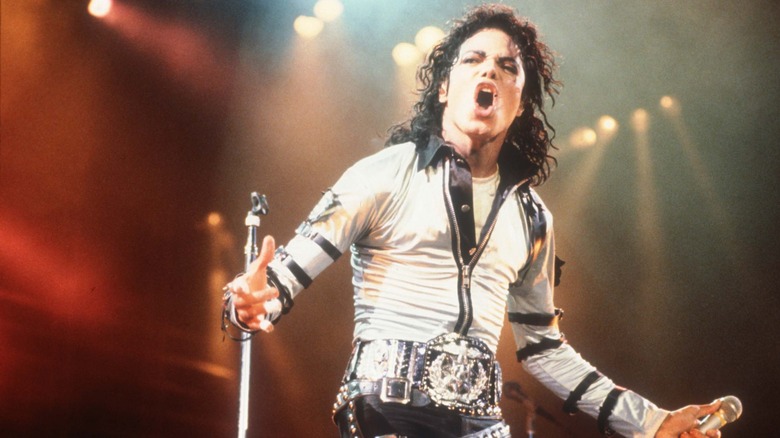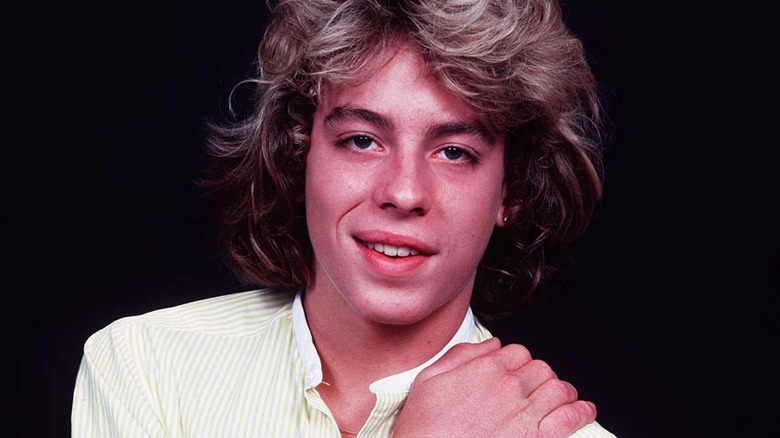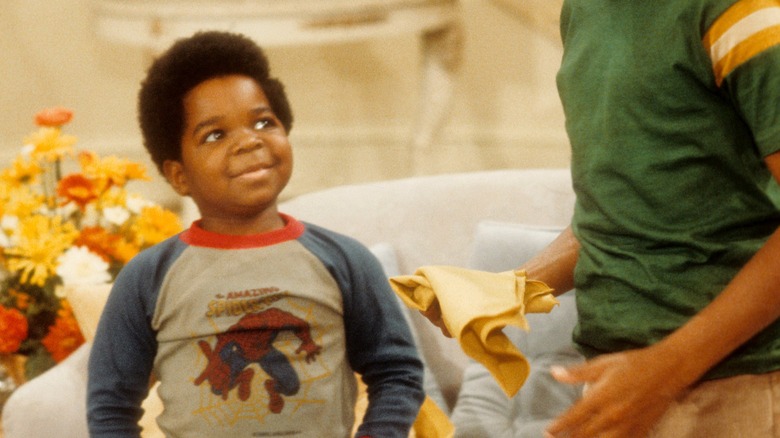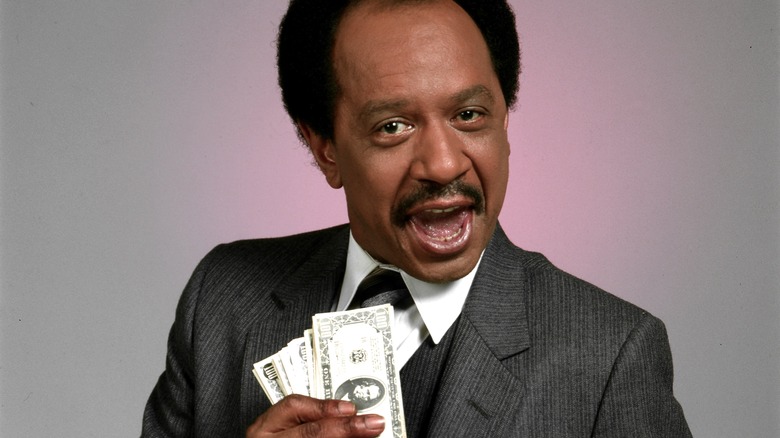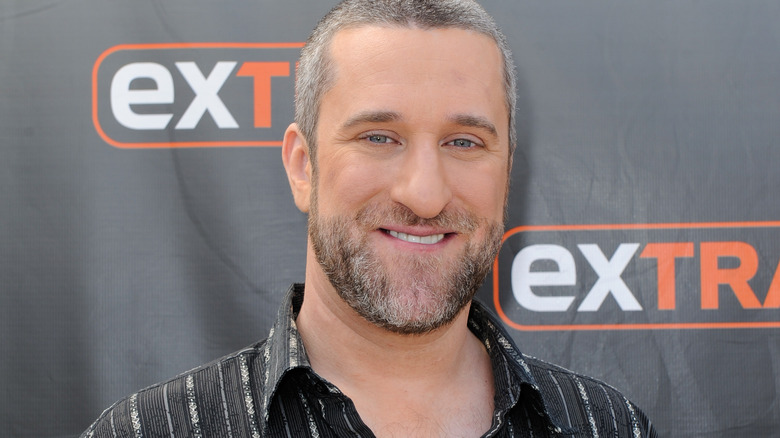1980s Stars Who Lost All Their Money
The 1980s was the decade of big hair, questionable, gaudy fashion, synthesizers, teen movies, and a bunch of other popular things you don't see anymore. This era saw a rise in media catered to the teen demographic, and Hollywood began banking on them like never before, according to Dr. Jonathan Lewis, film professor at Oregon State University (via The Science Survey). In came a wave of hot, young actors to carry the load, naïve and completely unprepared to handle their newfound wealth. A handful of '80s stars on this list fit the bill: Jodie Sweetin, Corey Haim, Gary Coleman, and Leif Garrett. But once they hit their late twenties, many of these stars were lost for answers. Their young, swoon-worthy looks hardened, their charisma no longer found audiences, their careers petered out, and they discovered, too late, that they spent all of their hard-earned money on alcohol, drugs, and other non-worthwhile investments. Many of these stars assumed the roles and opportunities would keep on coming, but Hollywood had other ideas.
Of course, not all of the former stars of the 1980s who were later broke were child actors. Former heavyweight boxing champion Mike Tyson saw $400 million in career earnings disappear from beneath him, while Kim Basinger and Sherman Hemsley were old enough to understand compound interest, but didn't have any luck. Read on to learn more about the biggest stars of the '80s whose pockets emptied out.
Debi Thomas
Debi Thomas was a trailblazer who became the first — and best — African American skater to win at the international level. In the mid-1980s, she emerged as an elite skater at championship events, first at the 1985 U.S. Nationals where she placed second, then at the 1986 World Championships where she earned first place (via Olympics). Her skating career culminated in a nail-biter competition at the 1988 Olympics between her and East German phenom Katarina Witt. But Thomas was impressive in more ways than one: She didn't stop her studies at Stanford University while training for the Olympics.
Thomas decided not to pursue a professional career in skating after 1988 and instead looked to the medical industry. Her path was still impressive: From Stanford, Thomas attended Northwestern Medical School in order to become an orthopedic surgeon. After a residency in Los Angeles, Thomas practiced in Illinois. She even dreamed of becoming an astronaut later in life. But a 2016 profile in The Washington Post revealed that Thomas was living in a mobile home with her family of four, her medals and skates long forgotten. She declared bankruptcy in 2014 and simultaneously saw her medical license expire. Her downfall came from an inability to work with others. Personality clashes led her to open up her own practice in the small town of Richlands, Virginia. But the lack of business led to a financial spiral. She has since spent time writing for the local paper.
Sinbad
David Adkins, more commonly known by his stage name Sinbad, skyrocketed to fame as a result of his regular role on the sitcom "A Different World." The comedy featured students at an all-Black college and was originally a spinoff to the "The Cosby Show," notes Encyclopedia. Sinbad portrayed Walter Oakes, a goofy dormitory director who tries to keep the college students in order. But he also became a source of wisdom during the show's more serious moments. Adkins left the show for a promising career in comedy and led stand-up specials on HBO, the first being 1991's "Brain Damaged." He then became a fixture in middling comedy features, once starring opposite Arnold Schwarzenegger in "Jingle All the Way." Adkins was so popular at the time that Fox gifted him his own show in 1993, "The Sinbad Show," although it only lasted one season.
But by 2013, Sinbad had filed for bankruptcy twice. The first time occurred in 2009, per HuffPost, and the second time was in 2013. But a lavish lifestyle wasn't to blame. He told HuffPost that he was using his personal finances to fund his business ventures, violating the famous Hollywood golden rule. He personally threw money toward his production company until he was $11 million in debt. Sinbad overestimated his chances to score another film role, and the debt just kept piling up. However, he's rebounded since and had another stand-up special, as well as made numerous other television appearances (via IMDb).
Willie Aames
Viewers once crowded around their televisions sets to catch a glimpse of heartthrob Willie Aames as Buddy Lembeck on the 1980s show "Charles in Charge." He also starred in the 1970s sitcom "Eight is Enough," notes People. In an interview with The Wrap, Aames said that at his peak, he was cashing in $1.6 million a year. His standard of living would alter drastically years later when he became homeless. Aames blamed his change of fortune on various factors: a lavish lifestyle, drug use, and bad investments. He told CBS that the pressures of fame led to bad decisions, such as extreme partying and drug addiction. No doubt, he had that in common with other young stars.
But his own financial manager put him in a precarious position. Aames was convinced to invest in a coal mine, but ended up owing the IRS $400,000, details The Wrap. The experience, which made Aames realize how little he knew about financial management, led him to pursue a new career as a financial advisor. By 2022, he also helmed his own production company and had married a longtime fan and pen pal of his, according to People.
Jodie Sweetin
Beginning in 1987, Jodie Sweetin played the middle child, Stephanie Tanner, in "Full House," per IMDb. Stephanie Tanner was known for her wit and sarcasm, along with her trademark outburst: "How rude!" However Stephanie Tanner, not Jodie Sweetin, became a household name, and Sweetin had trouble reinventing herself in the years since the show ended. In an interview with Complex, Sweetin said that after struggling to find new work, she resorted to drug use. The show ended when Sweetin was 13 years old, and a year later, Sweetin was an alcoholic. When she was 20, she was dealing with an addiction to crystal meth (per ABC News). By 2008, Sweetin announced that she was going clean and had gotten help at a rehabilitation center.
But the damage had been done: Sweetin was short on cash and in December 2008, it was reported that her house had been foreclosed, reported UPI. According to court documents detailing her crumbling marriage, Sweetin claimed that the utilities at her home had been shut off. In 2016, however, her fortunes had changed as Netflix picked up a reboot of "Full House." Sweetin had a starring role in the new show, "Fuller House," which depicted Stephanie's adult years with her sister, D.J. Sweetin told Complex that she was excited for the comeback as it would give her a second chance at acting.
Mike Tyson
Mike Tyson has long been a household name, but there was a time when he was making $30 million for a single fight and The New York Times reports he managed to haul in $400 million throughout his boxing career. In 1986, he became the youngest heavyweight champion of the world and developed a reputation for knocking out opponents in one round, notes Biography. But Tyson's career was littered with mistakes that cost his savings: After biting Evander Holyfield's ear, he was fined $3 million. His street fighting past came back to haunt him when he was forced to pay $45,000 in court. And after losing millions in lawsuits against past promoters, he began losing fights in 2002, devaluing his brand.
He filed for bankruptcy in 2003, citing more than $27 million in debt, per The New York Times. There were other reasons for that hulking debt, namely his lavish spending. Houses, cars, hard partying, and Siberian tigers all added up. Further, the filing came after a $9 million divorce. His marketing image was tarnished after a 1992 rape conviction, for which he served time, per Biography. But things turned around in 2009 after his cameo in "The Hangover" was well-received. He began making appearances on TV shows and had his own Broadway show, "Mike Tyson: The Undisputed Truth." That was also the name of his 2013 bestselling memoir. With other successful ventures in tow — the "Hotboxin' with Mike Tyson" podcast and a cannabis farm — Tyson's finances are now surely in order.
Kim Basinger
Kim Basinger was one of the biggest movie stars of the 1980s. Her career began rolling when she played Domino Petachi in the 1983 Sean Connery James Bond film, "Never Say Never Again," via IMDb. She quickly became a respected actress for her roles in "The Natural" and "Fool for Love," per Britannica. To paint a picture of her career's altitude at the time, her leading co-stars included Richard Gere, Bruce Willis, and Jeff Bridges. However, her legacy is mainly tied to Vicki Vale, the plucky reporter and Michael Keaton's romantic interest in Tim Burton's "Batman."
Basinger's sudden turn in luck came after one regretful decision. She made a verbal agreement to star in the 1993 film "Boxing Helena." She didn't honor her word, and Main Line Pictures sued her for nearly $9 million as a result, reports Variety. Basinger filed for bankruptcy afterward, arguing that her $5.4 million net worth at the time wasn't enough to pay the restitution. But with a string of feature hits, that finger wasn't in the red for long. She received an Academy Award for Best Actress in 1998 for her role in "L.A. Confidential," according to Britannica. During the 2000s, she starred in smaller roles, including in "8 Mile," "The Nice Guys," and two of the "Fifty Shades of Grey" sequels.
Michael Jackson
Michael Jackson, the King of Pop, needs no introduction. After coming onto the scene as a child star with the successful Jackson 5, Jackson later went off on his own, solidifying his solo career with the massive success of his fifth solo album "Off the Wall" in 1979, details Biography. It had several hits and "Don't Stop 'Til You Get Enough" won a Grammy. Jackson continued his solo career with "Thriller" in 1982, garnering 12 Grammy nominations and he now holds the title of the best-selling album of all time. His 1987 album "Bad" had five no.1 hits, setting a record. Jackson ended the peak of his career with more than 500 million albums sold worldwide (per The New Yorker).
And yet, at the time of his death, Jackson was in debt as much as $500 million, reports The Guardian. His financial troubles began with a $22 million lawsuit settlement paid to the parents of 13-year-old Jordy Chandler. Other lawsuits followed, some by concert organizers and some by investors. His treasured estate of Neverland was once nearly foreclosed. Another reason for his financial decline was due to his extreme spending. But a curious trend occurred posthumously; Jackson experienced a resurgence in sales after his death in 2009. Per NZ Herald, Jackson has raked in nearly $2 billion since, averaging an impressive $360 million a year.
Leif Garrett
Leif Garrett was once the quintessential teen idol. Justin Bieber is a great jumping off point if you want to understand the teen hysteria Garrett commanded. His face was constantly seen across the pages of teen gossip magazines, and he had the wild Hollywood lifestyle to complement his fame. Hard partying, drugs, and alcohol would later come back to haunt him, but all was well when he was just a 17-year-old star who could buy his own house (via A.V. Club). Starting off with a short acting career and branching off into music in the 1970s, Garrett became known for hits like his cover of "Surfin' U.S.A." and "I Was Made for Dancing," notes Biography. In the 1980s, Garrett returned to acting, starring in Francis Ford Coppola's "The Outsiders."
But the end of the decade brought the end of his career. Garrett had trouble finding his next project as an adult in the entertainment industry, but his drug addiction didn't help; in 1999, he was arrested for trying to purchase heroin. He also struggled emotionally due to a car crash that left his friend a paraplegic. Garrett was the driver and was high on drugs. His friend won a $7 million lawsuit settlement against him, reports The Washington Post. After filing for bankruptcy in 2001, it was revealed that Garrett's only source of income was a monthly $1,000 allowance from his mother. He was $76,198 in debt, per a Los Angeles Times report.
Gary Coleman
For years, Gary Coleman tried to escape his famous "Diff'rent Strokes" catchphrase, "What you talkin' 'bout, Willis?" He came into the role in 1978 at 10 years old, and the show lasted until 1986, notes Biography. "Diff'rent Strokes" made Coleman a wealthy kid, allowing him to cash in $70,000 an episode, reports BBC News. Yet, Coleman could never outgrow the role and had trouble finding new work to sustain his career. While recounting his years on the show during the "Behind the Camera: The Unauthorized Story of 'Diff'rent Strokes'" biopic, Coleman said the famous line eventually stripped him of his dignity (via The New York Times).
The biggest hit to Coleman's life post-series was the millions he lost, and his parents were to blame. They were his financial managers and were in control of his trust fund, per Biography. Instead of the $18 million Coleman was meant to receive at the age of 18, his fortune had dwindled to $220,000. He sued his parents but only recuperated $3.8 million. In 1999, he filed for bankruptcy, citing problems like medical expenses, the BBC reported. Coleman continued to work in show business the following years but would incur legal issues, including domestic violence charges. He died in 2010 at 42 years old after a serious fall, via Biography.
Sherman Hemsley
Sherman Hemsley in the 1970s and the 1980s was George Jefferson, a character that spanned two shows, per Encyclopedia. First appearing in "All in the Family," Hemsley stole the spotlight and was largely responsible for the creation of its spinoff series, "The Jeffersons." With his clever and entertaining portrayal of an African American businessman living in Manhattan with his family — not to mention his mean strut — Hemsley's show stayed on the air for a whopping 11 seasons. He later made appearances in "Family Matters" and "Fresh Prince of Bel-Air."
But even with all his success, Hemsley filed for bankruptcy in 1999 and had to crash at his manager's home in El Paso, according to "Inside Edition" (via KVIA ABC). Hemsley ended up having to sell the rights to his sitcom residuals to two men, William Little and David Pullman, according to The Hollywood Reporter. Little and Pullman engaged in a legal fight over eight years over breach of contract allegations concerning the residuals, a conflict that continued well after Hemsley's death. That's not the only strange news surrounding Hemsley's posthumous finances. His body had to be refrigerated more than a month after his death when a man claiming to be his brother objected to the contents of his will, details The Hollywood Reporter. It took four months for Hemsley to finally be laid to rest while the dispute resolved and no, that's not the plot to a "Jeffersons" episode.
Dustin Diamond
Screech from "Saved by the Bell," played by Dustin Diamond, was everyone's favorite geek from 1989 to 1994. Impressively smart yet hilariously oblivious to basic social mores, Samuel "Screech" Powers warranted his own spinoff show. But Dustin Diamond never got one. The actor who played Zack Morris' pal had trouble finding new work after the show and its college-themed sequels ended, as he told OWN in an interview. In fact, Diamond was tied to the role for 12 years. In an interview with former co-star Mario Lopez, Diamond said all his later acting auditions failed because producers couldn't see past the Screech character (via Extra TV) .
Diamond couldn't comfort himself with his hard-earned money, either, since his parents misspent the funds while he was still a minor, reports the Milwaukee Sentinel Journal. In 2001, he filed for bankruptcy and in 2006, he was forced to sell T-shirts, using his celebrity as marketing, in order to avoid foreclosure on his home. He then schemed up some unsavory ways to make money, including a fake sex tape in which he hired a body double to play him (via OWN). And after a 2009 tell-all book put him in a bad place with former "Saved by the Bell" co-stars, Diamond was never invited to the cast's reunions, as he told Lopez. He supported himself as a stand-up comedian in those years, an occupation he held as late as 2015 when The Hollywood Reporter touched base. He died in 2021, per The New York Times.
Corey Haim
Corey Haim is the poster child of Hollywood tragedy. After making the teen star a household name in the 1980s, the industry did little more than chew him up and spit him out. "The Lost Boys" was his breakout role, and it began a seven-time collaboration with actor Corey Feldman, per Biography. But Haim's career was on the decline in the 1990s due to drug addiction issues. Most of his roles during that time were in direct-to-video films. Haim died in 2010 when he was only 38 years old, due to pneumonia and natural causes.
Feldman's tributes to Haim after his death have shed light on the amount of adversity Haim had to deal with throughout his career. He's spoken at length on the sexual abuse that he and Haim were subjected to as child actors, including in a documentary entitled "My Truth: The Rape of 2 Coreys" (via Entertainment Weekly). Additionally Feldman said that in the last years of his life, Haim had been living in a specialty low–income apartment, taking care of his mother who was sick with cancer, and he had no car. He also had no connections in the industry that could help him financially (via "Larry King Live"). Haim filed for bankruptcy in 1997 when he was 26 years old, notes the NZ Herald.
